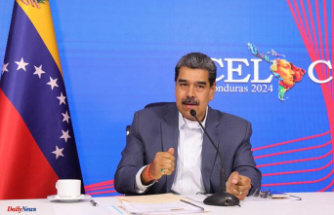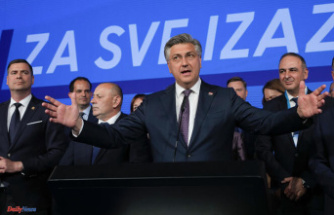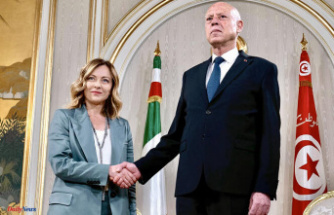The Government of Pedro Sánchez has upended the theory that a executive functions and the budget carried forward has more difficult to spend. The legislation puts the brakes on public spending in conditions of provisionality, but Sanchez has shown that these constraints can be circumvented with ease. Only way to explain how to be installed in Spain in the political blockage, with its Executive functions, and without accountability to the day, Moncloa has driven the expansion of public expenditure of such a caliber that has made shoot the deficit despite enjoying a revenue record. The result: a gap of 64 million euros each day .
A quick look at the accounts of the central Administration evidence that the political instability and the interim budget has left a thick bill. Continuously, since the year 2012 until 2017, the State Administration declined continuously its public spending, to the pair increased revenues to the heat of the rising economic. The result was a continuous reduction of the deficit.
That trend, however, broke the last year. In 2018, the public expenditure of the central Administration increased by over 11,000 million euros, with a country without budgets to the day and with a change of government mid-2018, for the motion of censure that clinched Pedro Sanchez and overthrew Rajoy. In the first half of 2019, more of the same: remain over the State Budget, 2019, and the Government of Sanchez, despite months installed in the interim, he has continued shooting up of public spending in a year that is going to be satisfied with two general elections, in addition to the municipal and regional may.
The runtime is spent every day in wages, 14.5 million more than in 2018
In 181 days between 1 January and 30 June 2019, the Administration Sanchez has consumed 111.945 million euros -without counting the operations of public debt. Have been 3.622 million euros more than what was spent by the central Government in the first half of last year -Rajoy ruled until 1 June 2018-.
nothing has served that, as of today, the ministries enjoy more income than ever -212.948 million in 2018 and more than 100,000 in the first half of this 2019- . Nothing has served because the spending has grown much faster than income. From January to June of the present year, the expenditure of all the ministries, it has grown triple the size of their income, and that the levy continues to rise.
End to seven years of improvementAs a result, in the first half, the central Government generated, or us red numbers of 11.529 billion euros , 2.251 million more than in the same period of 2018. That is to say, an escalation of the deficit of 24.3 per cent year-on-year. It has been an abrupt way to end seven consecutive years of deficit reduction in the central Administration.
Those 11.529 million euros on red numbers mean that the Administration Sanchez has generated a hole journal of 63,7 million euros. Or, what is the same, a deficit of 2,65 million euros per hour.
The economist and IESE professor José Ramón Pin is convinced that this bulky descuadre between income and expenses is the result of the electoral environment that accompanied the arrival of Pedro Sanchez at La Moncloa in after the motion of censure: promised elections when he was inaugurated president, was forced to convene this past February to not be able to approve the Budgets of the State, and the country will again vote on the 10 of November, not having been able to form a government after the elections of April.
"A government that is in election campaign and used the funds of the Spanish people not caring about the deficit leaves the figures that we are seeing," says José Ramón Pin. Remember the public spending that accompanied the "Friday social" - a term with which the Government of Sanchez described her meeting of the Council of Ministers in the months leading up to the April elections.
With the current political and economic context, the consequences of this escalation of the deficit multiplied. "Public spending is growing strongly, but not investments in infrastructures, which are fundamental components to implement a countercyclical policy response to combat a new crisis." The alternative would be to borrow more to finance investment, but this is very complicated, because Spain is already very much in debt, at almost the 100% of GDP.
"Investing in infrastructure has a multiplier effect on the economy: accelerating public works, generates direct employment linked to these projects and also generates activity in other sectors of the economy", says José Ramón Pin. But the public investment takes years in a minimum -also in the regions-and continues to sunken while you opt for to increase another type of expenses that are fattening the deficit. Bad recipe, underscores Pin, especially with the increased risk of a new economic crisis.
From January to June, spending whole of the ministries was to 3,600 million higher than in the same period of 2018The interim government, which dragged Spain from months ago and the political blockade have not only been felt in the accounts of the central Administration. In that atmosphere of instability of the national policy, the autonomies have entered also in your particular escalation of the deficit, and town halls have cut back the surplus that accumulated for years.
In the first half of 2019, the red numbers of the regional governments as a whole have increased by 10.3% compared to the same period of 2018. As with the ministries, the aggregate regional is also gaining its deficit, paradoxically, when you enjoy more income. Had ever raised as much autonomy as they are now. But instead of that this is serving to reduce the deficit, it grows because they have stepped on the accelerator of spending.
In the first half of this year, the autonomous regions have been generated, on the whole, a few red numbers of 7.938 million euros . Are approximately 740 million more than in the same period of 2018. Nothing to them has served to have raised $ 3.847 million euros more than in the first half of last year, because the expenditures have increased in almost 4.588 million, and a large part of these excess costs are in salaries.
More expenditure on staffinstead of taking advantage of this upturn in public spending to reinforce existing investments, which are doing the autonomies is to increase the structural costs. The chapter staff is the one who is swallowing a huge part of that resurgence of public expenditure autonomous: of those 4,600 million euros who have spent more in the first half, 2,000 million have been for staff. From January to June 2018, the regions were spent on salaries 37.293 million euros; in the first half of this year, 39.915 million euros. That is to say, the regions consumed in staff an average of 220,5 million euros each day, 14.5 million more than a year ago.
For the absolute number and the increase year-on-year, the three communities with a worse behaviour of the public deficit during the first half of this year have been the Valencian Community, Navarre and the Balearic islands. In the Valencian Community, the red numbers have soared 91.6% year-on-year in the first half, up 1.276 billion red numbers accumulated between January and June. In Navarre, the deficit has increased in the same period, 71.2%, and in the Balearic islands a 45%.
Date Of Update: 23 September 2019, 20:02











